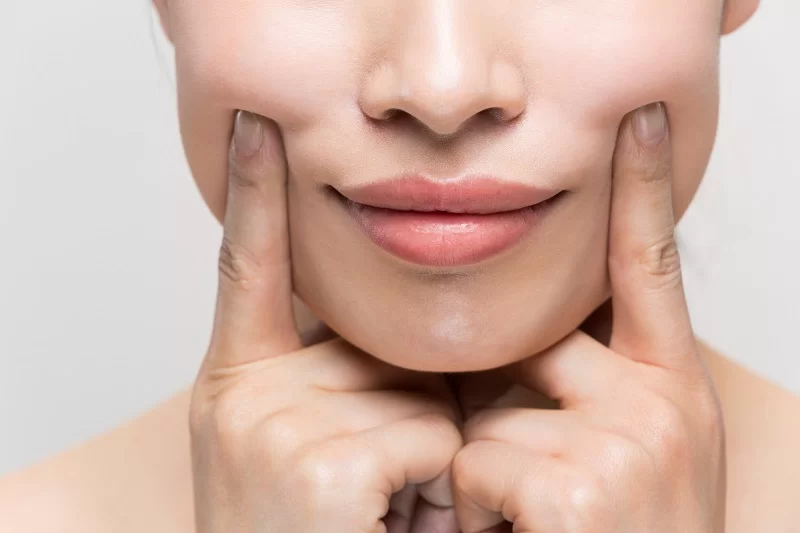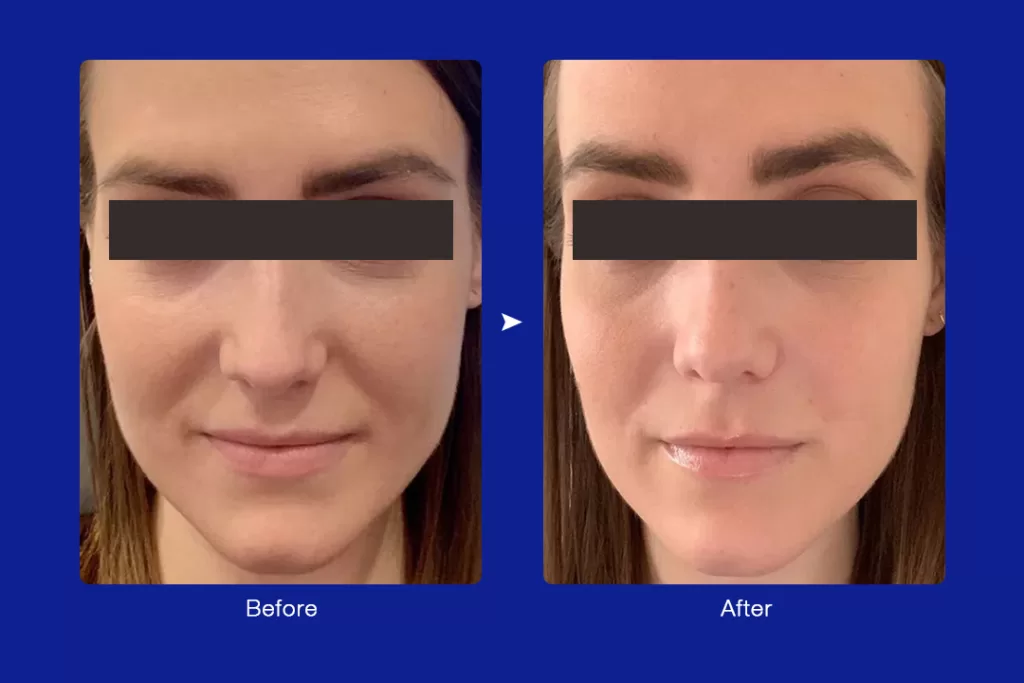Nasolabial folds, commonly known as laugh lines or smile lines, are the creases that run from both sides of the nose down to the corners of the mouth. While they are a natural part of human facial anatomy, they can become more pronounced with age, leading many people to seek treatments to reduce their visibility. This blog will explore what nasolabial folds are, the factors that contribute to their formation, effective treatment options—highlighting the MFU™pro, the only NMPA-certified anti-aging device in China—as well as some preventive measures you can take to delay their appearance.
What Are Nasolabial Folds?

Nasolabial folds are the deep wrinkles or lines that form between the sides of the nose and the corners of the mouth. Everyone has nasolabial folds, and their prominence can vary depending on factors like age, genetics, and facial structure. These lines typically become more visible as people age, contributing to an older appearance. Although they are not harmful, many people seek ways to reduce their appearance for aesthetic reasons.
The Difference Between Nasolabial Folds and Wrinkles
It's important to note that nasolabial folds are not the same as wrinkles. Wrinkles are fine lines that appear due to factors like facial expressions, sun exposure, and aging. In contrast, nasolabial folds are deeper and more pronounced. As the skin loses its elasticity with age, these folds can deepen and become more prominent, creating a tired or aged look.
Causes of Nasolabial Folds
Several factors contribute to the formation of nasolabial folds, with age being the primary one. However, lifestyle choices and genetic factors also play a significant role.
1. Aging
As we age, our skin naturally loses collagen and elastin, two proteins responsible for keeping the skin firm and elastic. The loss of these proteins leads to sagging skin, which causes nasolabial folds to become more prominent. Additionally, the fat pads in the face begin to shift and decrease in volume, leading to a loss of facial fullness and further deepening the folds.
2. Sun Exposure
Excessive exposure to ultraviolet (UV) rays accelerates the breakdown of collagen and elastin in the skin, leading to premature aging. Over time, sun damage can exacerbate the appearance of nasolabial folds by reducing skin elasticity and causing the skin to sag.
3. Genetics
Genetics also plays a role in the development of nasolabial folds. Some people are naturally predisposed to having deeper folds due to their facial structure. Those with higher cheekbones and fuller faces may have less noticeable nasolabial folds, while individuals with flatter or thinner faces may see them become more prominent over time.
4. Repeated Facial Expressions
Smiling, laughing, and other facial expressions can cause the muscles around the mouth to contract, leading to deeper lines over time. Repeated muscle contractions, coupled with a loss of skin elasticity, contribute to the formation of nasolabial folds.
5. Weight Fluctuations
Significant weight gain or loss can cause the skin to stretch or sag, which may accentuate nasolabial folds. When you lose weight, especially in the face, the skin may not tighten as quickly, leading to sagging and more pronounced folds.
6. Smoking
Smoking accelerates the aging process by reducing blood flow to the skin, which leads to a breakdown of collagen and elastin. Smokers often experience premature wrinkles, including deeper nasolabial folds.
Treatment Options for Nasolabial Folds
If you're looking to reduce the appearance of nasolabial folds, several treatment options are available, ranging from non-invasive procedures to surgical interventions. One of the most effective and advanced treatments is the MFU™pro, which has gained recognition for its ability to lift and tighten the skin.
1. Dermal Fillers
Dermal fillers are one of the most popular non-surgical treatments for nasolabial folds. Fillers like hyaluronic acid are injected into the skin to add volume and smooth out wrinkles. These fillers can provide instant results, and the treatment typically lasts for six months to a year.
However, dermal fillers do not address the underlying causes, such as loss of collagen and elastin. They are a temporary solution that may need to be repeated periodically.
2. Botox
While Botox is more commonly associated with treating dynamic wrinkles (such as frown lines and crow's feet), it can also be used to soften nasolabial folds. Botox works by relaxing the muscles around the mouth, which can help to reduce the appearance of deep creases. However, this is typically a secondary treatment, as fillers or MFU™pro are more effective for addressing volume loss.
3. Laser Treatments
Laser treatments can help stimulate collagen production and improve the overall texture of the skin. They are particularly useful for treating fine lines and improving skin tone, which can enhance the appearance of nasolabial folds.
4. Facelift Surgery
For individuals with severe nasolabial folds or significant sagging skin, a facelift may be recommended. A facelift involves surgically tightening the skin and underlying tissues to create a smoother, more youthful appearance. While this is a more invasive option, it can provide long-lasting results for those who are looking for a more dramatic improvement.
5. MFU™pro: The NMPA-Certified Solution
The MFU™pro, or Micro-Focused Ultrasound, is a cutting-edge anti-aging device that has earned the distinction of being the only machine certified by the National Medical Products Administration (NMPA) in China for reducing wrinkles and lifting the skin. It utilizes micro-focused ultrasound technology to stimulate collagen production deep within the skin, targeting the underlying layers without damaging the surface.
How Does MFU™pro Work?
The device delivers precise ultrasound waves to the deeper layers of the skin, where they generate controlled heat. This heat triggers the body's natural healing response, leading to the production of new collagen. Over time, this increased collagen helps to tighten and lift the skin, reducing the appearance of nasolabial folds and other wrinkles.
Benefits of MFU™pro:
- Non-invasive: Unlike surgical procedures, the MFU™pro requires no incisions or downtime.
- Long-lasting results: The effects of the treatment can last up to a year or more, as the skin continues to produce collagen.
- Targeted treatment: The device can precisely target areas with sagging skin, making it an ideal treatment solution.
- Safe and effective: As the only NMPA-certified device in China, the MFU™pro has been thoroughly tested for safety and efficacy.

Preventive Measures for Nasolabial Folds
While it may not be possible to completely prevent nasolabial folds, there are several steps you can take to delay their onset and minimize their appearance.
1. Use Sunscreen
Protecting your skin from UV damage is one of the most effective ways to prevent premature aging. Make sure to apply a broad-spectrum sunscreen with an SPF of 30 or higher every day, even on cloudy days. This will help protect your skin from the sun's harmful rays and prevent the breakdown of collagen and elastin.
2. Maintain a Healthy Diet
A diet rich in antioxidants, vitamins, and minerals can help support skin health and prevent the loss of elasticity. Foods like berries, leafy greens, and fatty fish are excellent sources of nutrients that promote collagen production and protect the skin from oxidative stress.
3. Stay Hydrated
Keeping your skin hydrated from the inside out is essential for maintaining its elasticity. Make sure to drink plenty of water throughout the day to keep your skin looking plump and youthful.
4. Avoid Smoking
Smoking accelerates the aging process and leads to the breakdown of collagen and elastin. Quitting smoking can significantly improve your skin’s health and delay the appearance of nasolabial folds and other wrinkles.
5. Use Anti-Aging Skincare Products
Incorporating products that contain retinoids, peptides, and antioxidants into your skincare routine can help stimulate collagen production and reduce the appearance of fine lines and wrinkles. Look for products that are specifically formulated to target the signs of aging, including nasolabial folds.
6. Practice Facial Exercises
Some facial exercises may help to strengthen the muscles around the mouth and cheeks, which can reduce the appearance of nasolabial folds. However, it’s important to perform these exercises correctly to avoid overworking the muscles and exacerbating the lines.
Start With The Expert Solution
Nasolabial folds are a natural part of aging, but that doesn’t mean you have to live with them. Whether you're looking for a non-invasive solution like the MFU™pro, dermal fillers, or preventive measures, there are various options available to help you maintain a youthful and vibrant appearance. It offers quick and safe results for those looking for a hassle-free, immediate solution. By understanding the causes and exploring effective treatments, you can take control of your skincare routine and reduce the impact of nasolabial folds on your overall look.






